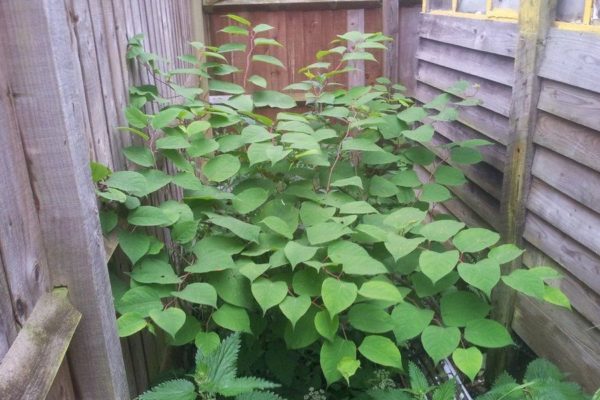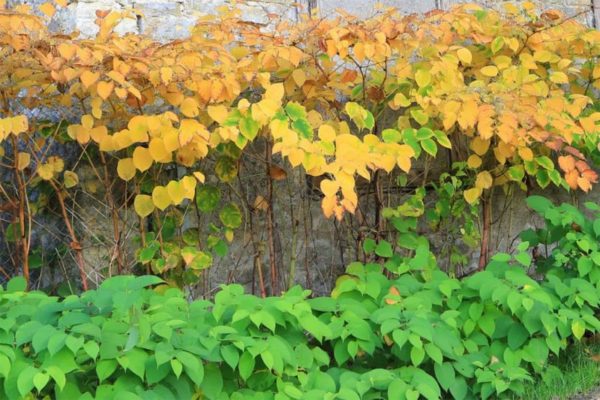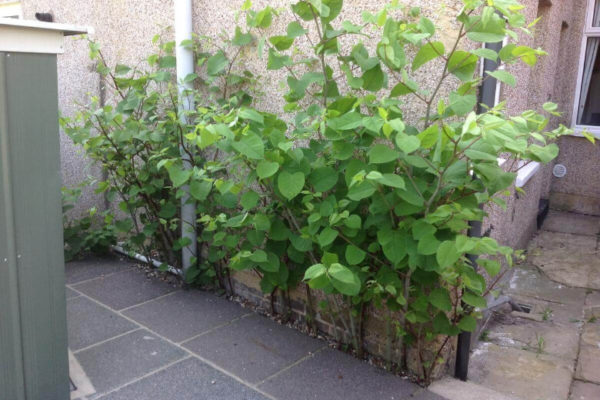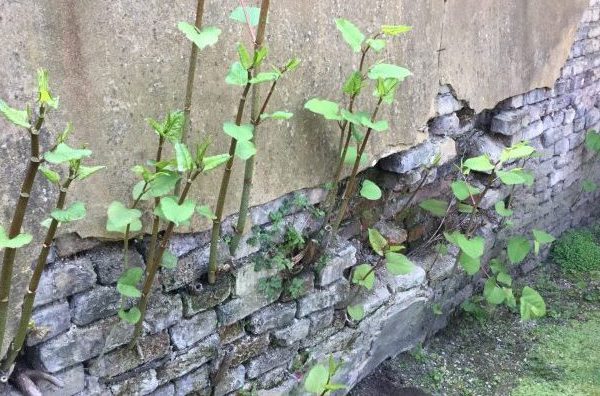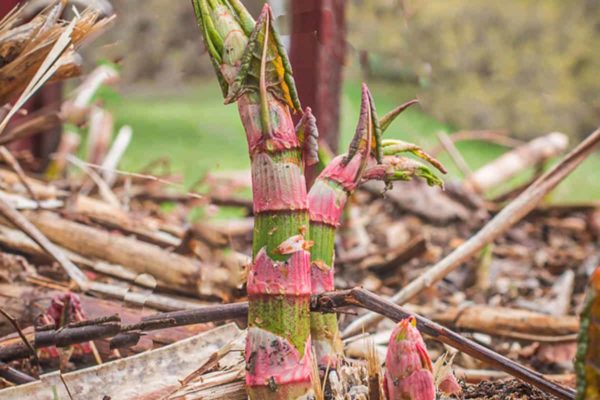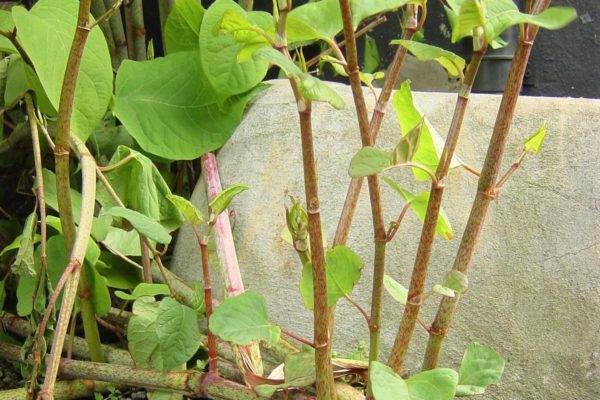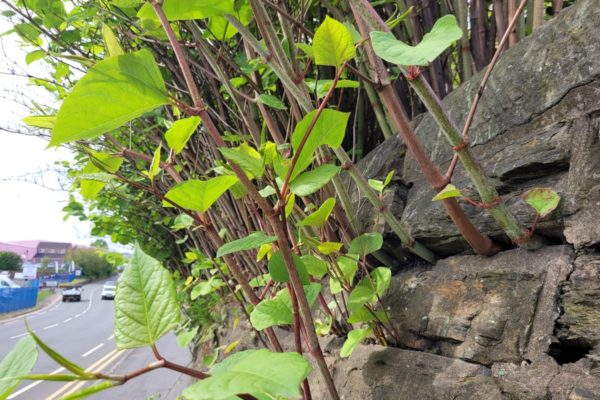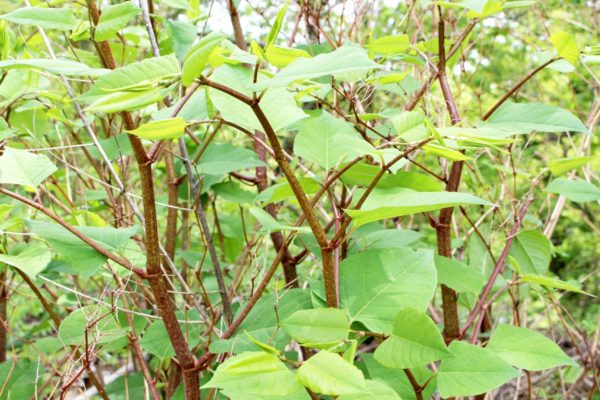Japanese Knotweed
Japanese knotweed is an invasive perennial plant that spreads by rhizomes, which can extend up to 3 metres deep and 20 metres wide. It’s a large clump-forming plant, which grows up to 3 metres tall, with light green shield-shaped leaves.
Four species of invasive knotweeds are found in the Metro Vancouver region: Japanese knotweed, Bohemian knotweed, Giant knotweed, and Himalayan knotweed.
Japanese, Bohemian, Giant, and Himalayan knotweeds are classed as noxious weeds within all regions of the province under the BC Weed Control Act.
Why is it a problem?
Japanese knotweed grows rapidly and can quickly overtake native plant species. Its extensive root systems can cause damage to buildings, roads, and other infrastructure.
Furthermore, Japanese knotweed is difficult to eradicate once it has become established, as it can regenerate from small fragments of its root system. Improper handling can unintentionally spread the plant, worsening the problem.
Japanese knotweed is a major concern for property owners, as its presence can reduce the value of land. It is also a concern for local authorities, who have to manage the costs of controlling its spread and preventing its impact on the environment.
How do you Identify Japanese Knotweed?
The appearance of Japanese knotweed changes with the seasons, so it is important to consider the time of year when identifying the plant. Japanese knotweed is most easily identified during the spring and summer months. Key traits of Japanese knotweed are;


